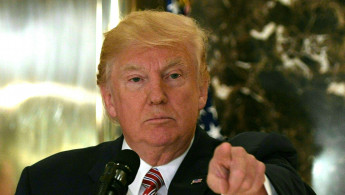Trump administration defends 'controversial' 45,000 refugee cap
The Trump administration defended its decision on Wednesday to sharply curtail the number of refugees allowed into the US to 45,000 next fiscal year.
This came despite the fact that global humanitarian groups decried the move and called the number far too low.
The 45,000 cap, to be formally announced by Trump in the coming days, reflects the maximum the US will admit during the fiscal year that starts Sunday, although the actual number allowed is expected to be far lower.
Even if the cap is ultimately hit, it would reflect the lowest admissions level for the US in more than a decade.
Lowering the cap reflects Trump’s opposition to accepting refugees and other migrants into the US.
Former President Barack Obama had wanted to take in 110,000 refugees in 2017, but the pace slowed dramatically after Trump took office and issued an executive order addressing refugees.
The total admitted in the 2017 fiscal year is expected to be around 54,000, according to officials. In 2016, the last full year of Obama’s administration, the US allowed in 84,995 refugees.
Though a broad array of criteria determines who receives refugee status, the allotments are broken down into specific numbers of refugees admitted from various geographic regions. The State Department conveyed those numbers to Congress on Wednesday, officials said.
Africa will receive the largest allotment of 19,000 refugees, or 42 percent of the total. The next-highest number goes to the Middle East and South Asia, which will be granted 17,500 slots, or 39 percent. The remaining allotments include 5,000 for East Asia, 2,000 for Europe and 1,500 for Latin America and the Caribbean.
Although the totals are far lower than in the Obama administration, the percentage granted to each region was left almost unchanged from the last year of Obama’s term. One key difference: there will no longer be an “unallocated” allotment of 14,000 refugees that could come from any region.





 Follow the Middle East's top stories in English at The New Arab on Google News
Follow the Middle East's top stories in English at The New Arab on Google News
![Israeli forces ordered bombed Gaza's Jabalia, ordering residents to leave [Getty]](/sites/default/files/styles/image_330x185/public/2176418030.jpeg?h=a5f2f23a&itok=_YGZaP1z)

